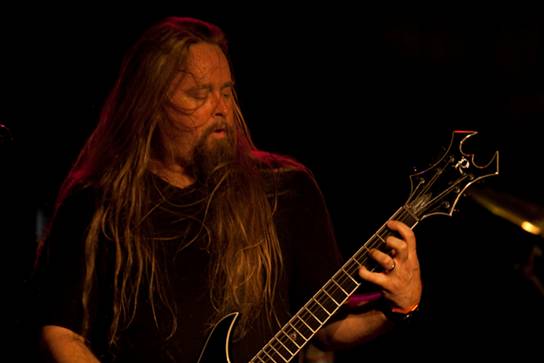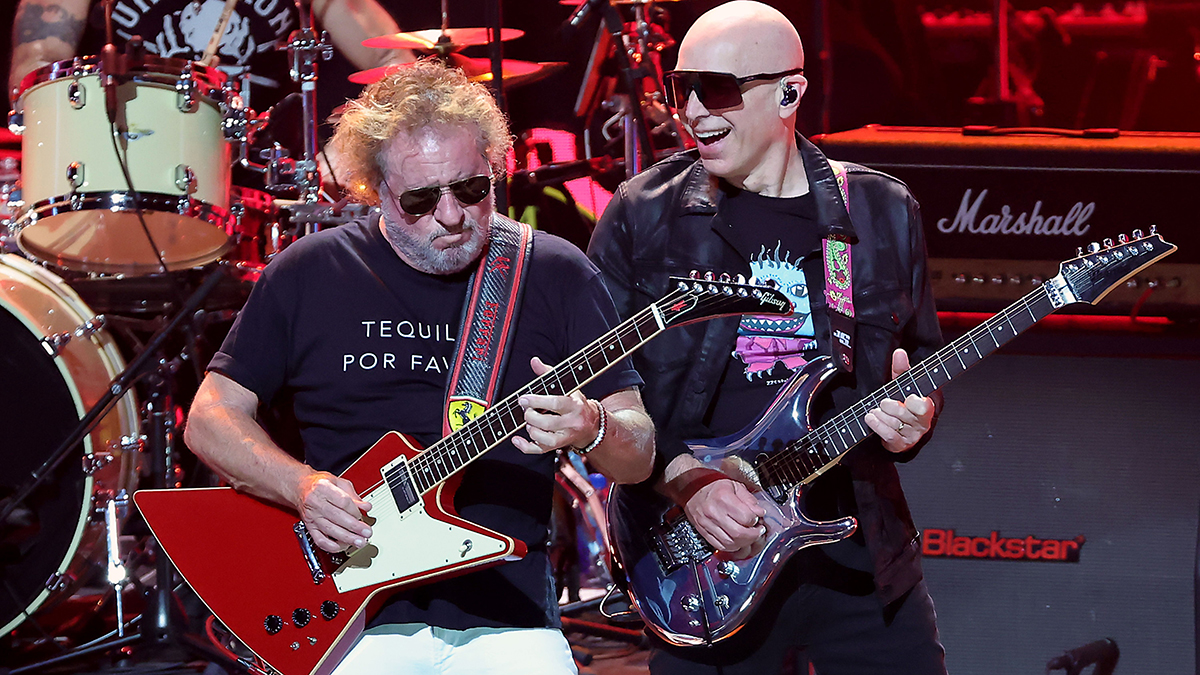What a Difference a Phrase Makes, Part 1

Hello again GuitarWorld.com readers. In my previous column, I wrote about my live rig, breaking down each component that I use, and why I use it, and what purpose it serves within my tone.
One of the first things I mentioned was that I feel “tone begins in the hands," that old adage a lot of players and tone connoisseurs refer to when trying to describe what it takes to make their tone.
Today I’d like to expand on that time-honored statement a little further with the following proposition: If tone begins in the hands, where do phrases begin, and end?
It’s often said that beauty is in the eye of the beholder; on that note, I’d like to take you through a few of my own favorite solos, and the phrases behind it, and explore the phrasing behind a few favorite solos I heard when I was a kid.
The first solo I’d like to take you through is one of my own, from the 1998 Vicious Rumors album Cyberchrist. It’s from a song called "Gig’s Eviction." The solo floats between an E and Eb key center, with all guitars tuned to C# standard tuning.
The first phrase is an example of something I really love to do; stretch the potential of what my key center appears to be. It sounds like I am playing an E Major pentatonic phrase, but I’m actually outlining the E Major triad, adding in the 7th and 9th to the arpeggio.
In the second phrase, while playing a pedal point from the E note, I am outlining the 9 and 7, setting up the key change with the last E major arpeggio ending on the 5th, which leads to the first note in Eb, the 5th of that key.
Get The Pick Newsletter
All the latest guitar news, interviews, lessons, reviews, deals and more, direct to your inbox!
While in the new key, I play through chord tones that are mostly sequenced in whole steps, changing between octaves.
The fourth phrase picks up with a long legato run in E Lydian which finishes on the #7. This note becomes the root of the new key.
In the fifth phrase, my focus is more on chord tones. I am playing from the b7, bending into the root, the 3rd into the 4th and back , then descending back through R,7, and 5, then the 3rd of the chord. At the end of the phrase, I am now up an octave higher, bending the 4th into a 5th, and finishing with a 1 ½ step bend from the 5th in the new octave. I have also made effort to match the snare drum in this last bit of the phrase, playing 16th note triplet picked phrase, then 16th note vibrato. It is my feeling that making an effort to finish your phrases with expression and chord tones, much like finishing your sentences with a pause or period when you speak or write, can be a key component in creating a memorable phrase.
One solo I found inspiration in that I have long looked up to, in terms of phrasing, is from the Bryan Adams song "Cuts Like A Knife." The soloist, Keith Scott, adds more to the song with this solo, in my opinion, with some very memorable phrasing that would now be looked at as “classic '80s rock." Here is a version in that style:
The opening phrase is a legato trill based on the b7 and 3rd from D minor pentatonic that descends with a tremelo bar depressing them.
The second phrase starts with a familiar blues bend lick, then moves to a #6 and b7 note, before finishing with a bend from the 7 to 6, ending up at the 4, outlining D Mixolydian in the process.
The 3rd phrase continues the D Mixolydian outline, from the 2nd bending up to the 3rd, then up to the 4th, adding a suspended note over the chord progression, and more tension.
The last phrase is based on a pedal-point from D, going to the 5th and #6, then on to a b7, finishing with a bend that is picked percussively off of the root.
Another favorite solo of mine is "Sailing Across The Ocean," from Ozzy and Randy Rhoads. In particular, I took inspiration from the first four phrases not only for their simplistic nature, but also how it made me feel. This solo truly made me feel like I was on a ship sailing across the ocean, with it’s almost nomadic pentatonic based phrasing.
In the opening phrase, Randy plays an E major pentatonic lick from the 2, finishing at the 3rd and octave higher.
On the second phrase, Randy switches over to the relative minor, playing a C# blues lick that moves into a chromatic descending line which finishes on the 2.
In the 3rd phrase, Randy plays a motif from the 3rd and 2nd notes, that expands into the 4th note, before finishing with a descending C# minor run.
The 4th phrase sees Randy play a 3 note ascending sequence, then finish the phrase with an ascending diminished arpeggio.
We’ve taken an analytical look at some of my favorite phrases and solos so far, but I also believe there is a second focus which needs to be addressed, something which I believe helps to keep cohesion between all of those phrases. This is the sense of visuality with which a solo with can potentially put into a song. For myself, the inspiration in this idea will primarily come from lyrics or a word if it is a vocal song, or even a title, if the song is an instrumental piece.
With the solo to "Gig’s Eviction," I took a direct understanding of what the lyrics were about. They were about a displaced homeless man, living in an abandoned apartment just below where we used to rehearse the band. Seeing the disparaging look in this man’s eyes, as he was being led by a policeman out of the building he had occupied for quite some time, unbeknownst to any of the band, or the landlord. I tried to convey that as best I could from the outset of the solo to the end, with the first phrase representing the man being given notice of eviction, the next several phrases representing the argument that ensued, and the last phrase meant to reflect the feelings of pent up anger as he was physically removed from the premises, fighting and resisting as he left.
I am well aware that all of this tends to be very subjective; one might not visualize the same things I attempted to convey in my solo, while others might be able to get some semblance of it, based on the song title alone. That is the true essence of art, in my opinion. It’s in the eye of the beholder. This is also where I believe the idea of musical phrases truly find their beginning and end as well. Chops, and imagination.
I would highly suggest checking out your favorite solos and phrases, to see if they follow this pattern of cohesion. Do they tell a story? Do those phrases embellish the song, help reflect a visual sense of the lyrical content? Or are they just the “hot licks” of the week/month/year? What about your own solos? Have you ever tried to create a sense of visuality with them? If not, give this a try when you set about creating your next solo, and see what you come up with. You might surprise yourself in the process!









